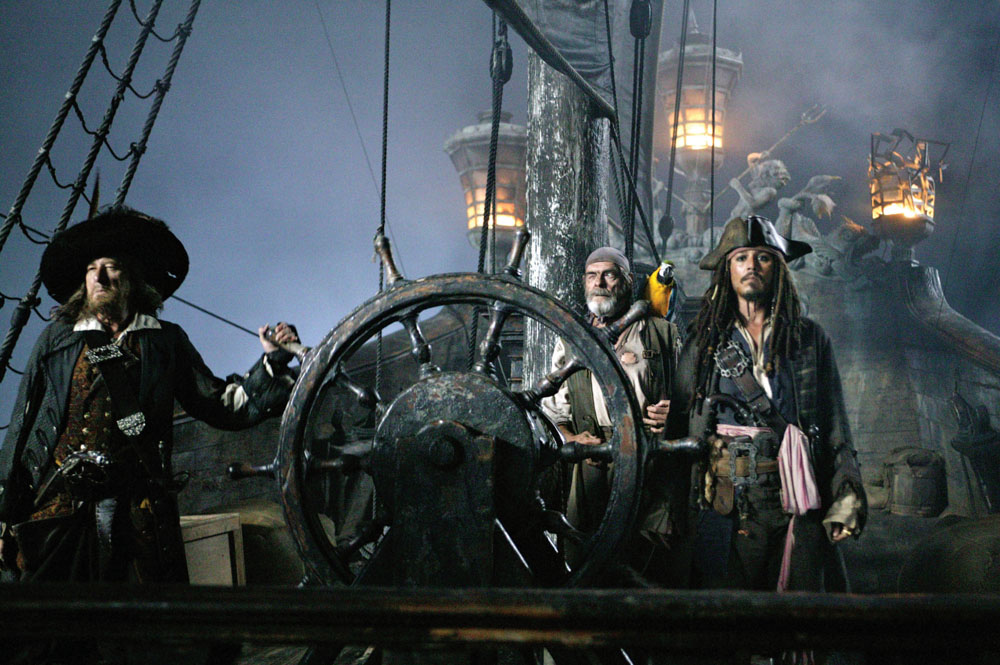
Disney
made an excellent series of fantasy swashbuckler films based on the legendary haunt, Tortuga,
and piracy, a formula that made Errol Flynn famous as a privateer for Good
Queen Bess, romanticizing the plundering and treasure hunting, with
British Naval officers as some of the antagonists.
The series is intermingled with ghost ships and pirates, that are
cursed, relying heavily on CGI for effects - that are excellent in the
main, if a little overdone on the skeletal ghost front. A little goes a
long way!
The
key players of the Pirates of the Caribbean film
series are Johhny Depp as Captain Jack Sparrow,
Elizabeth Swann (Keira Knightley)
and Geoffrey Rush as
Captain Hector Barbossa, with Orlando
Bloom as Will Turner.
Pirates
of the Caribbean was produced by Jerry
Bruckheimer and based on Walt Disney's theme park attraction of the
same name. The film series serves as a major component of the eponymous
media franchise.
Directors of the series include Gore
Verbinski (films 1–3), Rob Marshall (4),
Joachim Rønning (5–6),
and Espen Sandberg (5). The series is primarily written by
Ted Elliott
and Terry Rossio (1–4); other writers include Stuart Beattie (1), Jay Wolpert (1), Jeff Nathanson (5), Craig Mazin (6).
The stories follow the adventures of
Captain Jack Sparrow (Johnny Depp), Will Turner
(Orlando Bloom) and Elizabeth Swann (Keira Knightley). Characters such as Hector Barbossa (Geoffrey Rush) and Joshamee Gibbs
(Kevin McNally) follow Jack, Will and Elizabeth in the course of the films.
The fourth film features Blackbeard
(Ian McShane) and Angelica (Penélope
Cruz), while the fifth film features Armando Salazar (Javier
Bardem), Henry Turner (Brenton
Thwaites) and Carina Smyth (Kaya
Scodelario).
The films take place in a fictionalized historical setting; a world ruled by the British Empire, the East India Trading Company (based on the real East India Trading Company) and the Spanish Empire, with pirates representing freedom from the ruling powers.
The film series started in 2003 with Pirates of the Caribbean: The Curse of the Black Pearl, which received positive reviews from critics and grossed US$654 million worldwide.
After the first film's success, Walt Disney Pictures revealed that a film series was in the works. The franchise's second film, subtitled Dead Man's Chest, was released three years later in 2006; the sequel proved successful, breaking financial records worldwide the day of its premiere.
Dead Man's Chest ended up being the number one film of the year upon earning almost $1.1 billion at the worldwide box office.
The third film in the series, subtitled At World's End, followed in 2007 earning $960 million, and Disney released a fourth film, subtitled On Stranger Tides, in 2011 in conventional 2D, Digital 3-D and IMAX 3D. On Stranger Tides succeeded in also grossing more than $1 billion, becoming the second film in the franchise and only the eighth film in history to achieve this.
The franchise has grossed over $4.5 billion worldwide; it is the 14th-highest-grossing film series of all time, and is the first film franchise to produce two or more movies that grossed over $1 billion.
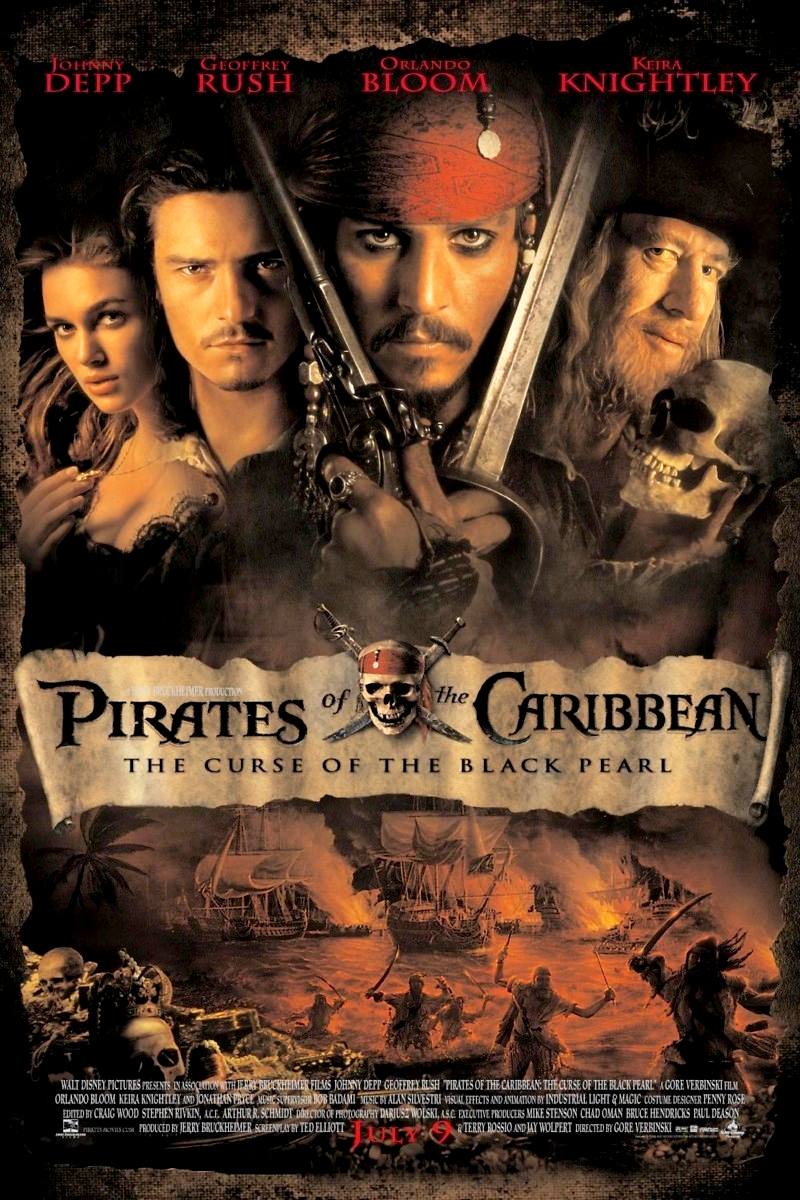
1. Pirates of the Caribbean: The Curse of the Black Pearl (2003)
Blacksmith Will Turner teams up with eccentric pirate Captain Jack Sparrow to save Turner's love, Elizabeth Swann, from cursed pirates led by Jack's mutinous former first mate, Hector Barbossa. Jack wants revenge against Barbossa, who left him stranded on an island before stealing his ship, the Black Pearl, along with 882 pieces of cursed Aztec Gold.
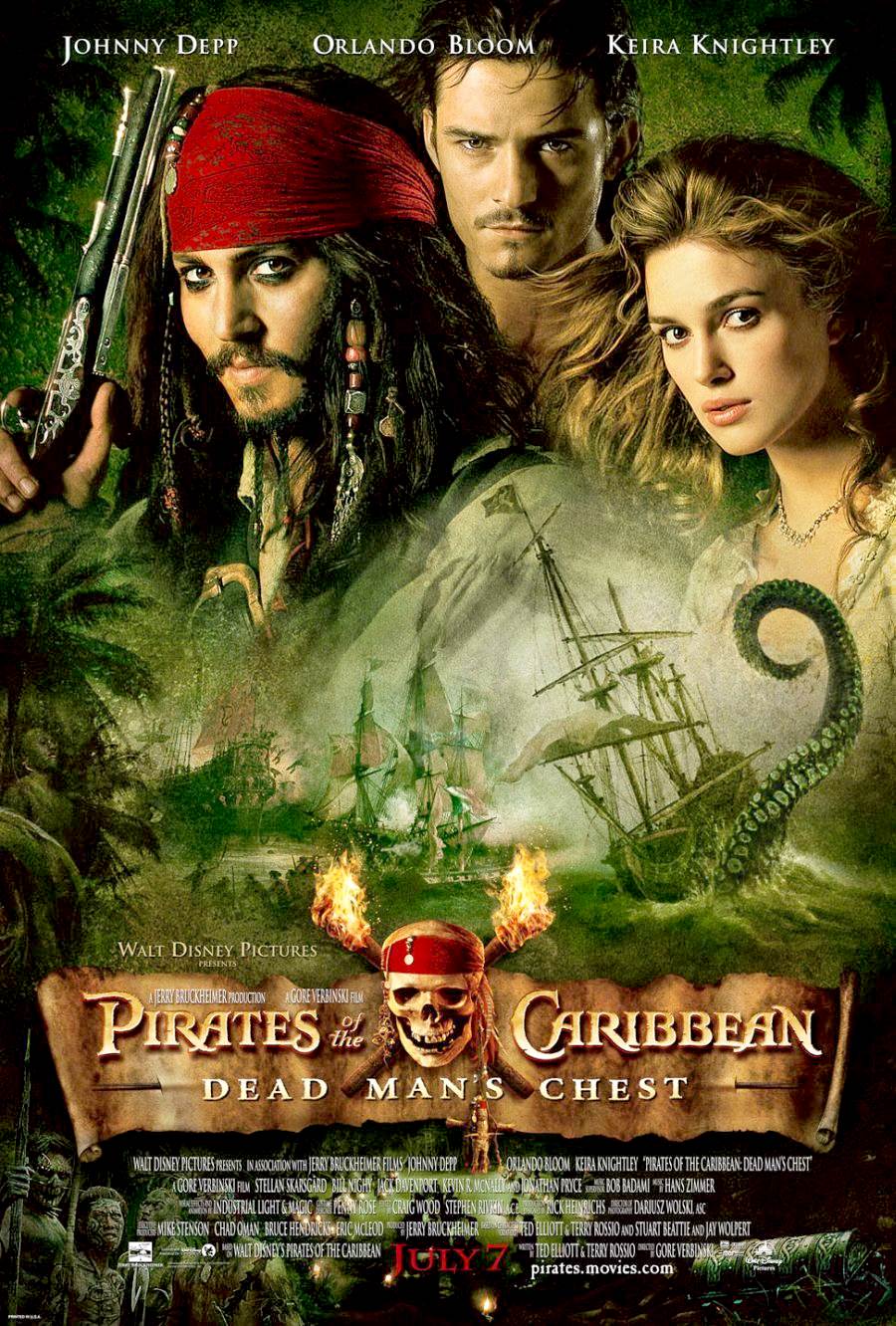
2. Pirates of the Caribbean: Dead Man's Chest (2006)
Lord Cutler Beckett of the East India Trading Company arrests Will and Elizabeth for aiding Captain Jack Sparrow in the previous film. Beckett offers clemency if Will agrees to search for Jack's compass in a bid to find the Dead Man's Chest—and inside, the heart of villainous Davy Jones—which would give Beckett control of the seas. However, Jack wants the Chest to escape from an unpaid debt with Jones, who made Jack captain of
the Black Pearl for 13 years in exchange for 100 years of service aboard Jones' ship,
the Flying Dutchman.
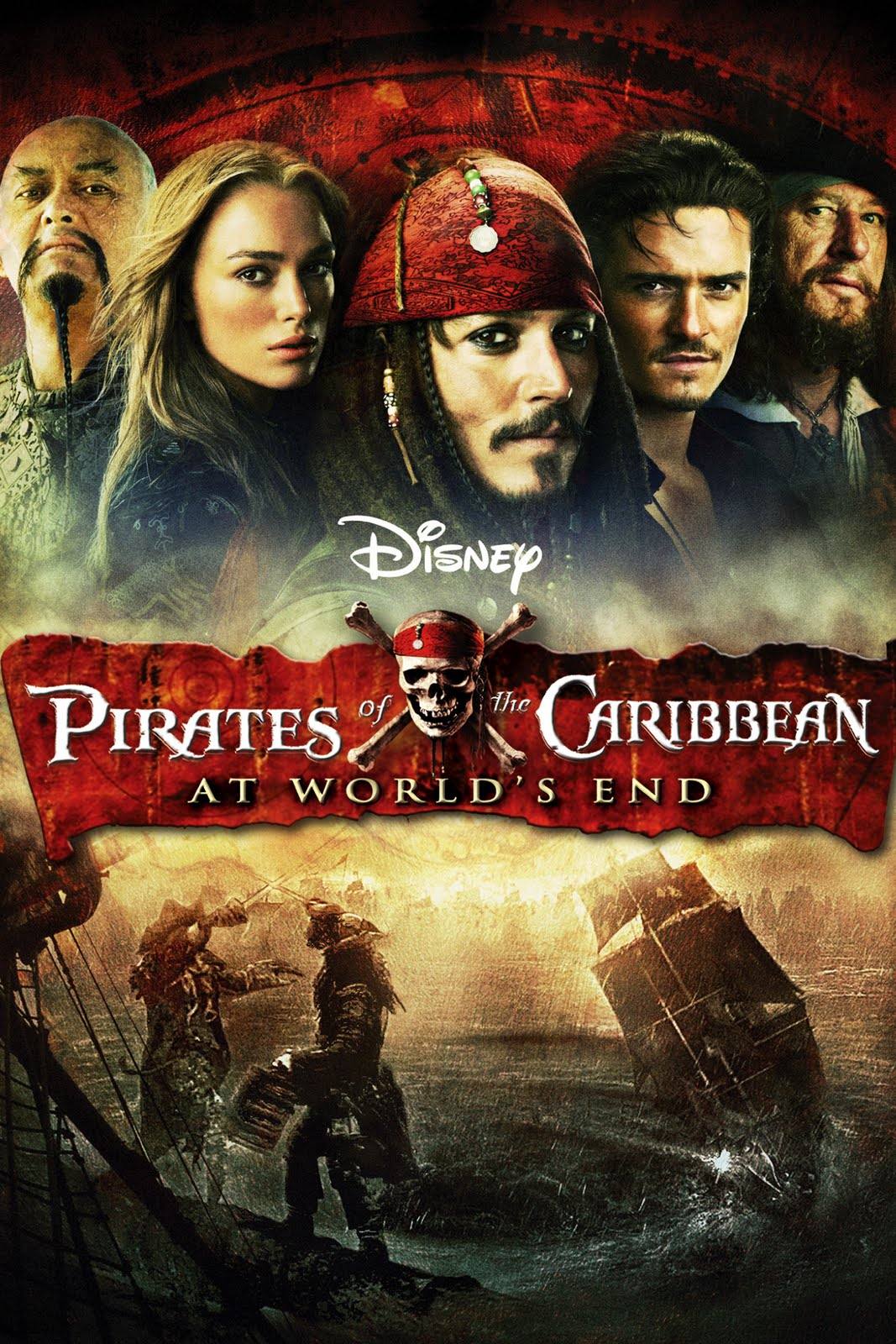
3. Pirates of the Caribbean: At World's End (2007)
Lord Beckett gains power over Davy Jones and, with the help of the Flying
Dutchman, he is now executing his plans to extinguish piracy forever. To stand against the East India Trading Co., Will, Elizabeth, Barbossa, and the crew of the Black Pearl set out to rescue Captain Jack Sparrow from Davy Jones' Locker. As one of the Nine Pirate Lords, Jack is needed in order to release an ancient goddess with the power to defeat Beckett's forces.
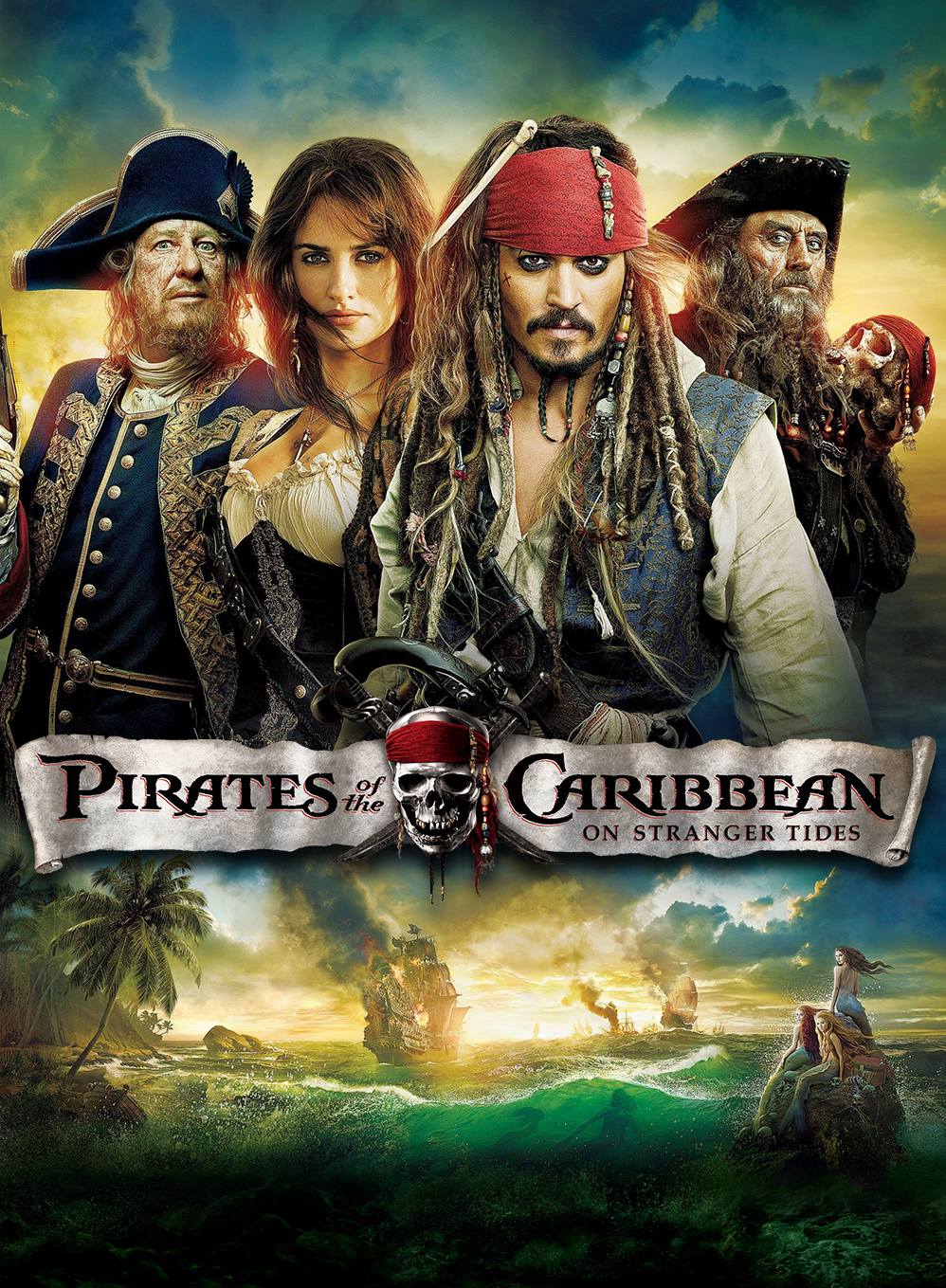
4. Pirates of the Caribbean: On Stranger Tides (2011)
Captain Jack Sparrow is on a quest to find the fabled Fountain of Youth and crosses paths with a former lover, Angelica. She forces Jack aboard the
Queen Anne's
Revenge, a ship captained by the infamous pirate Blackbeard, Angelica's father. Both are also in search of the Fountain: Angelica to save her father's soul, Blackbeard to escape a prophecy of his demise at the hands of a one-legged man. Joining the hunt is former pirate captain Barbossa, now a privateer in King George II's Navy, who is in a race against the Spanish for the Fountain of Youth.
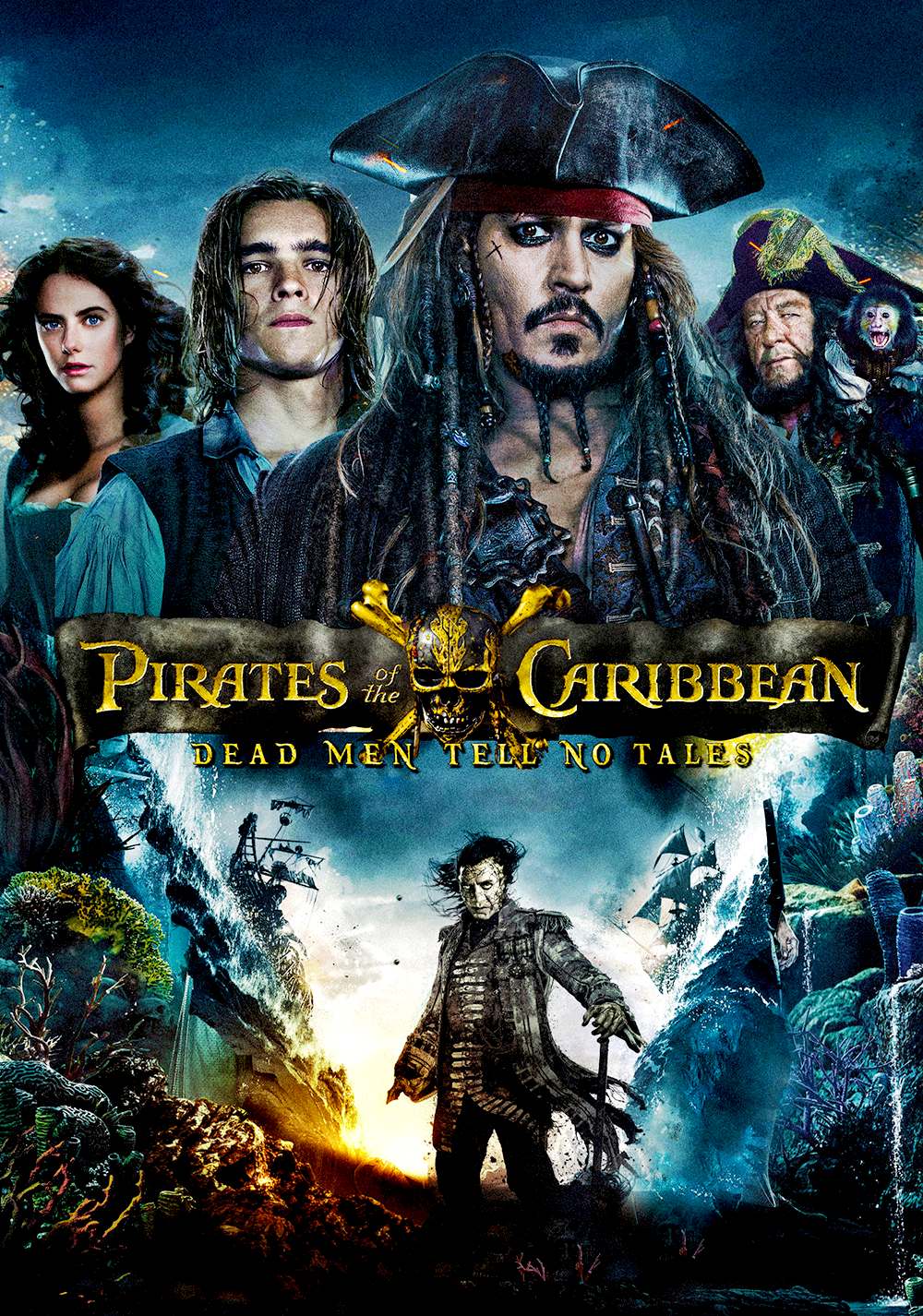
5. Pirates of the Caribbean: Dead Men Tell No Tales (2017)
A group of ghostly Spanish Royal Navy soldiers led by Jack Sparrow's old nemesis, Captain Armando Salazar, escape from the Devil's Triangle, with the goal of killing every pirate at sea, including Sparrow. To survive, Sparrow seeks out the legendary Trident of Poseidon, a powerful artifact whose owner can control the seas, tides, aquatic animals and break curses.
6. Potential Sixth film
Shortly before the release of On Stranger Tides, it was reported that Disney was planning to shoot the fifth and the sixth films back-to-back, although ultimately only the fifth installment was developed. By March 2017, director Joachim Rønning stated that Dead Men was only the beginning of the final adventure, confirming that it would not be the last film of the series. In September 2017, producer Jerry Bruckheimer indicated that another Pirates of the Caribbean is still in development. In October of the same year, Kaya Scodelario stated that she is contractually signed to return for a sixth film. Shortly after, it was confirmed that Rønning will direct the film. In May 2020, there were reports that the studio were considering Karen Gillan, Daisy Ridley and Emma Watson for the female lead, while Bruckheimer commented that the first draft of the screenplay for the sixth film would soon be finished, adding that he was "unsure" of Depp's role in the movie.
7. Potential Spin-off film
In June 2020, it was announced that Disney was developing a female-led spin-off with Christina Hodson set to pen the screenplay and Margot Robbie attached to star. The film will be a separate from the sixth film currently being developed. Jerry Bruckheimer will also be attached to the project as producer.
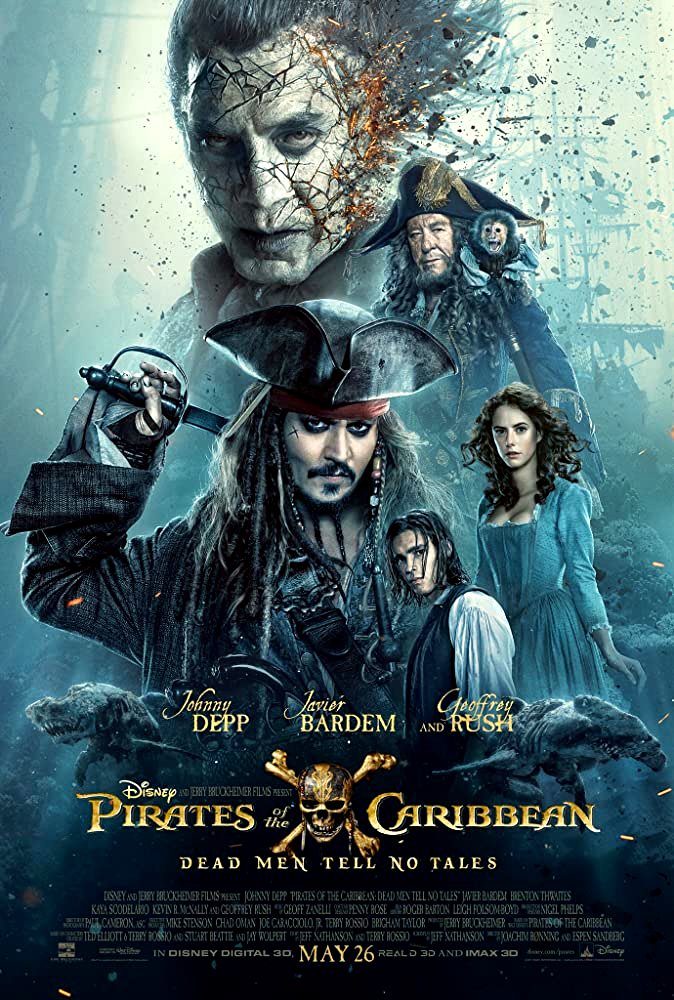
BOX OFFICE
1. The Curse of the Black Pearl July 9, 2003 $654,264,015 - Budget: $140 million
2. Dead Man's Chest July 7, 2006 $1,066,179,725 - Budget: $225 million
3.
At World's End May 25, 2007 $963,420,425 - Budget: $300 million
4.
On Stranger Tides May 20, 2011 $1,045,713,802 - Budget: $378.5 million
5.
Dead Men Tell No Tales May 26, 2017 $794,780,215 - Budget: $230 million
Total
Revenue: $4,524,358,182 - Budget $1.274 billion
Not
bad!
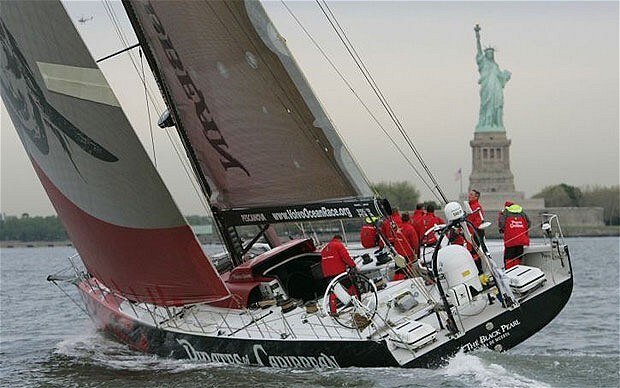
Pirates
of the Caribbean entry in the Volvo Ocean Race 2005-6
A
BIT OF PIRATE HISTORY
Pirates have existed since ancient times – they threatened the trading routes of ancient Greece, and seized cargoes of grain and olive oil from Roman ships. The most far-reaching pirates in early medieval Europe were the Vikings.
A life of Piracy on the high seas tempted poor seamen because it offered them the chance to take more control of their
lives and adventure. Ordinary seamen toiled for modest wages and were subject to strict discipline. In contrast, piracy offered sailors a chance to get rich quick as
equals or at least shareholders of captured booty.
ENGLISH SEA DOGS, PRIVATEERS
English Sea Dogs were pirates that sailed during the Privateering Era under the leadership of
Queen Elizabeth I between 1560 and 1605. During this time they had explicit permission from the Queen known as a Letter of Marque which allowed them to engage in acts of piracy against the Spanish and other colonial powers the English were at war with at the time.
One of the first well known English Sea Dogs would be John Hawkins who began in the mid 16th century. Hawkins would also be engaged in the slave trade as part of the Trans-Atlantic Triangular Trade. Another famous Sea Dog was
Francis Drake who raided Spanish settlements all across the world. One of Drakes most famous exploits was to sail around to the Pacific Coast and raid Spanish settlements before returning to England, completing his second
circumnavigation of the globe.
In 1588 the famous English Sea Dogs named Francis Drake, John
Hawkins, Walter Raleigh and Martin Frobisher were all part of the English naval forces that helped defeat the Spanish Armada and challenge Spanish naval
dominance. In 1604 when peace was made with Spain many of the Sea Dogs went to work in the Barbary States.
Overall the English Sea Dogs were responsible for striking great blows against the Spanish Main. Eventually they would be replaced by the English Buccaneers who operated throughout the Buccaneering Era and helped manage to establish actual colonies for the British Empire throughout the West Indies.
CORSAIRS
Corsairs were pirates who operated in the Mediterranean Sea between the 15th and 18th centuries. Muslim corsairs, such as the Barbarossa (red beard) brothers, had bases along North Africa’s Barbary Coast, while Christian corsairs were based on the island of Malta. Both used to swoop down on their targets in oar-powered boats called galleys, to carry off sailors and passengers. Unless these unfortunates were rich enough to pay a ransom, they were sold as slaves.
BUCCANEERS
Thousands of pirates were active between 1650 and 1720, and these years are sometimes known as the 'Golden Age’ of piracy. Famous pirates from this period include
Henry
Morgan, William 'Captain' Kidd, 'Calico' Jack Rackham, Bartholomew Roberts and the fearsome Blackbeard (Edward Teach).
By the beginning of the 18th century, piracy was becoming hard work. The Spanish galleons no longer plied the oceans with chests full of dubloons, and responsible governments with large navies were getting tired of pirates preying on their vessels.
Still, there was a living to be made by those who were prepared to take
risks. The famous pirate Blackbeard (Edward Teach) plundered successfully for nearly three years until, in a hand-to-hand fight with Lieutenant Maynard of the H.M.S. Pearl, he
was taught the difference between swinging a cutlass brutally and skill and
training with a blade. Twenty-five wounds later, Blackbeard expired on the deck.
In 1717, George I offered a general amnesty to all pirates who surrendered themselves before 5th September of the following year. Many members of the profession
decided to quit while ahead and settled down to become respectable citizens. There were a few
pirates who could not change their lives of piratical adventure. They were hunted down ruthlessly
until by 1725 it was just about over.
FRENCH
BUCCANEERS
French buccaneers were famous pirates of the Buccaneering Era that were from the French Empire. These buccaneers were responsible for establishing the first French colony in the New World in Spanish controlled La Florida that was known as Saint Caroline. However, this settlement of French huguenots was wiped out by the Spanish under the command of Pedro Menendez de Aviles who assaulted them from nearby Saint Augustine.
After this defeat the French buccaneers moved to the rocky outcrop island of Tortuga off the coast of Hispaniola and established
the famous pirate haven. They would clash with the Spanish for many decades and eventually be successful in not only claiming Tortuga but
a third of the island of Hispaniola as well that the French named Saint-Dominigue.
French buccaneers were just as famous as their English or Dutch counterparts.
Buccaneers lived on the Caribbean island of Hispaniola and its tiny turtle-shaped neighbour, Tortuga, in the 17th century. At first they lived as hunters, but later the governors of Caribbean islands paid the buccaneers to attack Spanish treasure ships. Although raids began in this way, with official backing, the buccaneers gradually became out of control, attacking any ship they thought carried valuable cargo, whether it belonged to an enemy country or not. The buccaneers had become true pirates.
Privateers, meanwhile, were privately owned (rather than navy) ships armed with guns, operating in times of war.
17th century pirates were also known as buccaneers and operating mostly during the Buccaneering Era. Called boucaniers, the English term 'buccaneers', these groups of French and English pirates would raid Spanish settlements and ships alike in a state sponsored piracy campaign.
The buccaneers of the 17th century were generally more ruthless, and merciless than the 18th century pirates.
Operating out of their bases at Port Royal and Tortuga, the 'Brethren of the Coast' were not pirates in the sense they were conquerors. Buccaneers raided ships at sea when it was convenient for them but they also had massive armies with which they would militarily take out Spanish troops and invade settlements from the land. They were known for sacking and ransoming cities,
but there total take was a lot less than the 18th century pirates in that they had more men to split the loot with.
Most of the exploits of the buccaneers are only known about through the
writings of the surgeon aboard Henry Morgan's ship named Alexander Exquemelin. His primary source book first published in Dutch as De Americaensche Zee Roovers (1678),
known in English as the 'Buccaneers of America,' is one of the best documents
to understand the biographical story of the buccaneers.
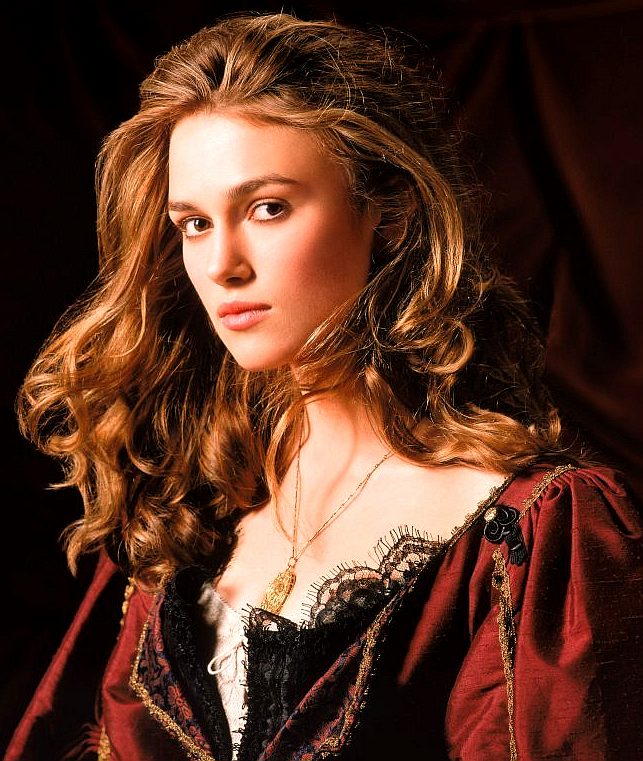
Kiera
Knightly as Miss Elizabeth Swann in an absolutely stunning outfit
Please use our
A-Z INDEX to
navigate this site








